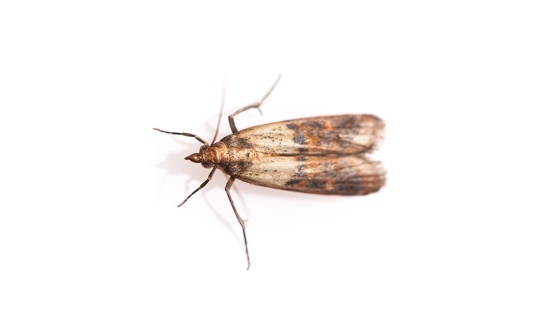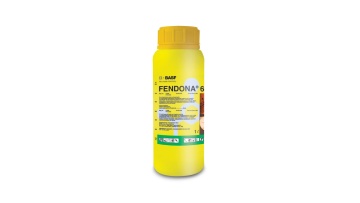Moths
Moths are not a direct threat to animal and human health, but their larvae do feed on and thus destroy stored goods and materials i.e. fabrics. To date, well over 150,000 species have been identified and recorded, they are a pest that can cause great impact to a wide range of environments.
Moths vary in size, colour and appearance but are often identified by their two pairs of wings which are covered in scales. Most moths that reside in buildings and houses, have a wingspan of less than 2cm with grey, brown or reddish brown markings.
They tend to reside in places where lighting is low, or dark, e.g. attics, basements and closets. Moth infestations can arise before signs of their presence is apparent, because of this the damage they can cause can be significant e.g. in clothing, drapes and furniture. The outdoor species are often more brightly or metallic coloured.

Moths are recognized as a major agricultural and household pest. They feed on a very wide range of materials, including wool, fabric, felt, hair, fur and feathers; some also feed on blood.
Moths can damage stored products such as cereals, nuts and herbs by laying their eggs in the stored food. Their larvae will eat and also contaminate the stored produce by leaving behind faeces, webbing and moulting. In addition, during the infestation, heat is produced which can cause mould harmful to human health.
Larvae of the cotton bollworms, tomato fruit worms and corn earworms can damage natural fibres in clothes, fabrics, carpets and furs or even in leather. Fruit farms can be affected by codling moth infestations, and brassica growers are often troubled by the Diamondback Moth.
Identification
Moth infestations are often not recognized until moths are seen flying, by which time damage is already likely to have happened. Early identification is key via the following indicators:
- In food, moth activity can ben seen by telltale webbing, the presence of larvae or pupae and flying moths in, or in the vicinity of, stored food products
- In fabrics, such as wool, check for larvae, silk pupae or flying and crawling adult moths
How do moths cause infestations?
Moth invasions can arise in a number of ways – either by adults flying into a building or storage facility via openings e.g. doors, vents and windows, or via already infested materials, plants or food products.
Prevention Tips
To reduce, or prevent, moths from entering buildings or other premises, including homes:
- Inspect all items before storage
- Pay close attention to plants
- Avoid outdoor lighting adjacent to building openings i.e. doors and windows, this will attract outdoor moth species to enter


